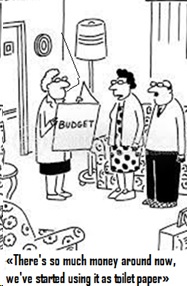The US Bureau of Labor Statistics (BLS) reported on December 10 that the Consumer Price Index (CPI), which intends to reflect inflation, rose 6.8% in the 11 months through November at a level that is only lower than the one reached 42 years ago during the economic crisis by the end of the Carter Administration. This compares negatively with the previous 4 years, when the CPI grew 10.5%, representing a 2.62% yearly inflation according to the CPI. 
However, the CPI is a misleading measure. When it was created reflected the gradual deteriorating reality of the purchasing power of US individuals and families, but its parameters have been distorted in recent decades through multiple revisions intended to hide the erosion of the dollar's real value and purchasing power This is happening due to the uncontrolled growth of the Money Supply caused by the Treasury Department's current policy without any support whatsoever from a proportional growth of the country's Gross National Product (GNP) nor counting on the proper adjustment of its balance of payments. Money supply (M2) in the U.S. has skyrocketed over the last two decades, up from $4.6 trillion in 2000 to $19.5 trillion in 2021. In fact, this humongous monetary policy represents a hidden tax of considerable proportions.
Government Economists use a basket of goods when calculating CPI. This basket contains a specific number and type of products that those economists believe most individuals will purchase to maintain a basic standard of living. But the CPI doesn't measure changes in consumer prices proportional to their rank in the family budget, therefore, it is not an accurate way to measure purchasing power. For example, the price of gasoline only represents a very low weight of 4% in the Index. In addition, it does not factor in changes in the quality of goods purchased nor it takes into consideration new items added to the basket of goods.
Substitution bias is the first of the most common problems with CPI. The issue is that all prices for the items in the basket —both goods and services, in most cases— do not change by the same amount at each measurement period. Additionally, consumer preferences constantly change.
Another tool is the Buying Power Index (BPI). It is estimated using the following equation: Buying Power Index = 0.5 (markets percentage of U.S. effective buying income) + 0.3 ( market's percentage of U.S. retail sales) + 0.2 (the market's percentage of U.S. population). In other words, it is a measure that takes into account the buying income, retail sales, and population size of a market to arrive at a score that indicates how successful -or not- a new market might be. According to this tool, average Americans had an indexed purchasing power of $38.40 last January and it fell to $36 this November.
To conclude, it is important to understand that inflation is NOT a phenomenon caused by increased consumption, as some politicians deceitfully are trying to lead us to believe, because consumption is governed by the law of supply and demand, according to which, any free enterprise system not affected by draconian government measures, reaches an equilibrium as prices adjust to the purchasing power of the consumer. And a price system in equilibrium does NOT generate inflation. Therefore, purchasing power erosion is a consequence of political decisions. Economic science clearly determines that inflation is largely a problem caused by monetary policy.
Budgetary policy (Federal Spending) is another determinant factor on how high inflation will be. In 2021, the federal government is spending so far $6.83 trillion. If you divide it by the U.S. population estimate in 2021, 332.8 million (U.S. Census Bureau), it would equate to a little more than $20,500 in federal spending for every individual. That wouldn't be a problem if revenues covered the expenditures, but the projections for 2021 show that the federal government would only collect about $3.5 trillion in revenue in the fiscal year 2021.
However, the government promises not to raise taxes to balance the budget. This simply means that the real tax is hidden in the erosion of the value of the dollar and in the corresponding growing deterioration of the purchasing power of the country's inhabitants.